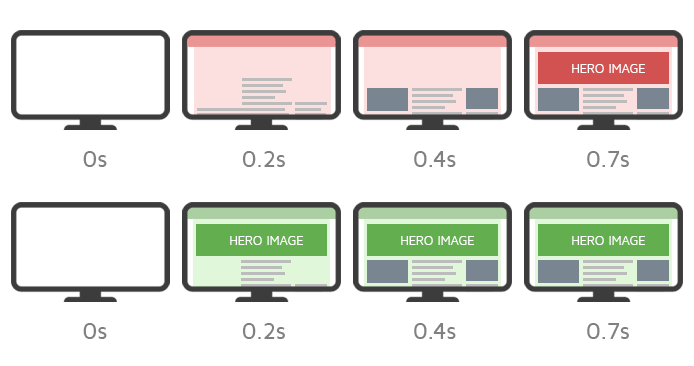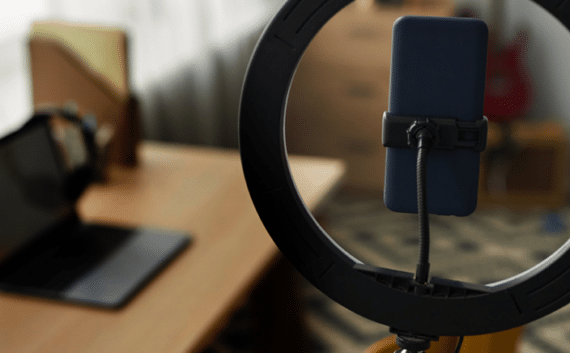
Google usually doesn’t provide much, if any, information about its algorithm updates, which means the announcement in May 2020 that Core Web Vitals would become an official part of Google’s 2021 Page Experience Update — and that there are exact metrics to meet — indicates this update will be an important one.
With less than two months to go until it takes effect in May 2021, time is quickly running out to improve your website’s Core Web Vitals and pass the assessment.
So, what are Google’s Core Web Vitals and why do you need to take notice? In a nutshell, Core Web Vitals are a set of specific factors prioritised by Google in a webpage’s overall user experience. It consists of three specific page speed and user interaction measurements:
- Largest Contentful Paint (LCP)
- First Input Delay (FID)
- Cumulative Layout Shift (CLS)
The reason you need to take notice is that falling short of the specified measurements could result in lower rankings for your pages.

Image Credit: Chromium Blog
If you’ve used Google’s PageSpeed Insights to measure your website (or a specific webpage) page speed performance, you should be somewhat familiar with these terms. However, if you hadn’t taken notice of ‘Field Data’, ‘Lab Data’, ‘Opportunities’, ‘Diagnostics’ and ‘Passed Audits’ and focused only on performance scores (the weighted average of the metric scores), now is the time to pay attention.
While Google makes it clear this information doesn’t directly affect mobile and desktop performance scores, implementing these suggestions (or the suggestions you’re capable of implementing) can help your pages load faster and optimise cumulative layout shift, providing users with faster access to your content and eliminating that jarring effect that frustrates users and delivers a poor user experience.
Core Web Vitals Metrics Explained
The specific user-centric metrics comprising Core Web Vitals will probably confuse anyone without website development experience. However, they make more sense when aligned with the three pillars of page experience: loading performance, responsiveness and visual stability.
Largest Contentful Paint (LCP)
LCP measures the time from the user requesting the page until the largest piece of content appears on the screen, which is usually an image or video, but sometimes a large text element. This user-centric metric is important because it signifies the point in the page load timeline where enough content has been rendered to enable the user to engage with it. According to the Core Web Vitals assessment criteria, to provide a good user experience (and achieve a good or ‘green’ LCP score), LCP should occur within the first 2.5 seconds of the page starting to load.

Image credit: GTmetrix
First Input Delay (FID)
This metric measures page responsiveness (i.e. the time from a user’s first interaction with a page to the time in which the browser can begin processing a response). In terms of the user experience, it is important because it ensures the page is usable, but also because it assures users they can interact with the page, therefore, helping to make a good first impression. A good score, according to the new criteria, is an FID of less than 100 milliseconds.

Image credit: Onely
Cumulative Layout Shift (CLS)
As CLS measures a page’s visual stability, it quantifies layout shifts, which is the occurrence of a visible element changing position from one rendered frame to the next. CLS is important to the user experience by ensuring on-page elements (e.g. images, videos, text blocks) don’t shift in unexpected ways that interfere with a user’s on-page interactions. A good Core Web Vitals score is a CLS of less than 0.1, which is calculated by multiplying the Impact Fraction (the measured impact of unstable elements on the screen between two frames) by the Distance Fraction (the measured distance that unstable elements have moved in relation to the screen).

Image credit: Web Dev
If the above metrics sound confusing, you’re not alone! Making the necessary improvements requires a developer’s expertise, but you can still get an understanding of where your most important pages are at with Google’s PageSpeed Insights, Lighthouse and Search Console (Core Web Vitals Report). These free tools provide page performance insights as well as helping you prepare for the Core Web Vitals update, so they’re worth familiarising yourself with and using to monitor your site’s performance.
Why You Need to Prepare for Core Web Vitals
Not only is Core Web Vitals an update with specific benchmarks that you can actually prepare for — unlike previous algorithm updates that involve a fair degree of speculation — but studies from Google and other sources show that pages which meet these benchmarks deliver better user experiences. Fulfilling the expectations of your visitors across core user experience needs, such as page loading (LCP), interactivity (FID) and visual stability (CLS), delivers better on-site user experiences that can improve time on site, dwell time, bounce rate and other key metrics that, although may or not be exact ranking factors, are strong indicators of relevance and user intent and, therefore, can boost rankings.
While we all know the importance of delivering excellent user experiences — and meeting Core Web Vitals criteria will certainly help to deliver better experiences for visitors to your site — many digital marketers and site owners are concerned about potential algorithmic penalties.
At this stage, it’s really just too early to say with any conviction what the expected ranking impact will be, but it’s unlikely that websites which don’t meet Google’s criteria will see severe ranking implications immediately. And if you’re worried that your website is an outlier and will be one of the few websites that sees a drastic reduction in search rankings, don’t be — Moovweb analysed the mobile homepages of 6,500 US eCommerce websites and found that only 13% achieved a ‘good’ score across the three metrics.
Having said that, making these specific user experience improvements will result in happier visitors who are more likely to return to your website, better align the performance of your website with your brand — branding being a promise that tells your customers what to expect — and potentially increase conversion rates and maximise your revenue. Bearing those points in mind, Google’s Core Web Vitals update isn’t something to fret about and fear, but rather an opportunity to capitalise on that offers significant benefits for your customers, your brand and your online presence as a whole.
If you need help with your website’s page speed or search engine rankings, get in touch with NOUS at [email protected] or call (07) 3003 0722.
Blog image credit: SEO Hacker





